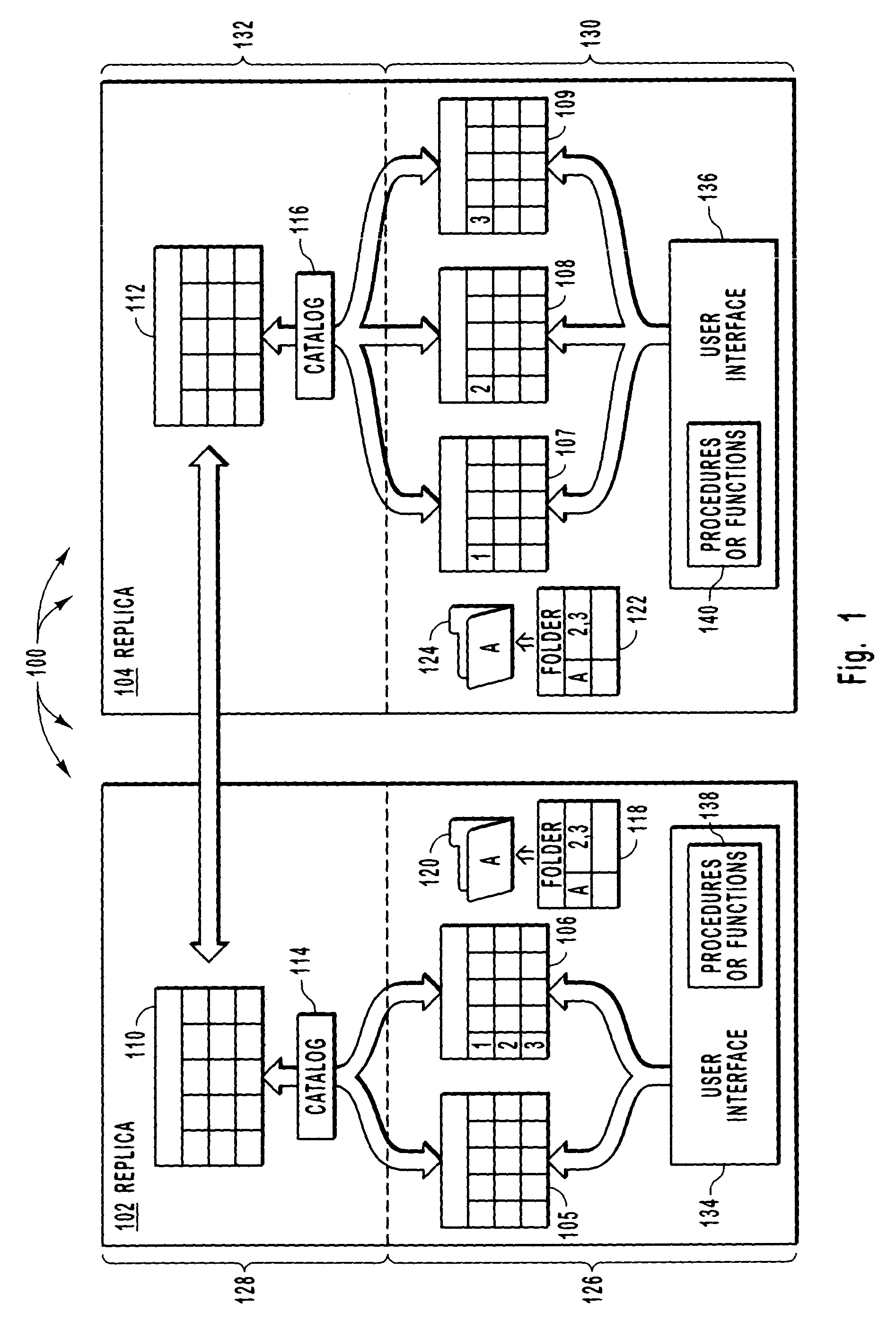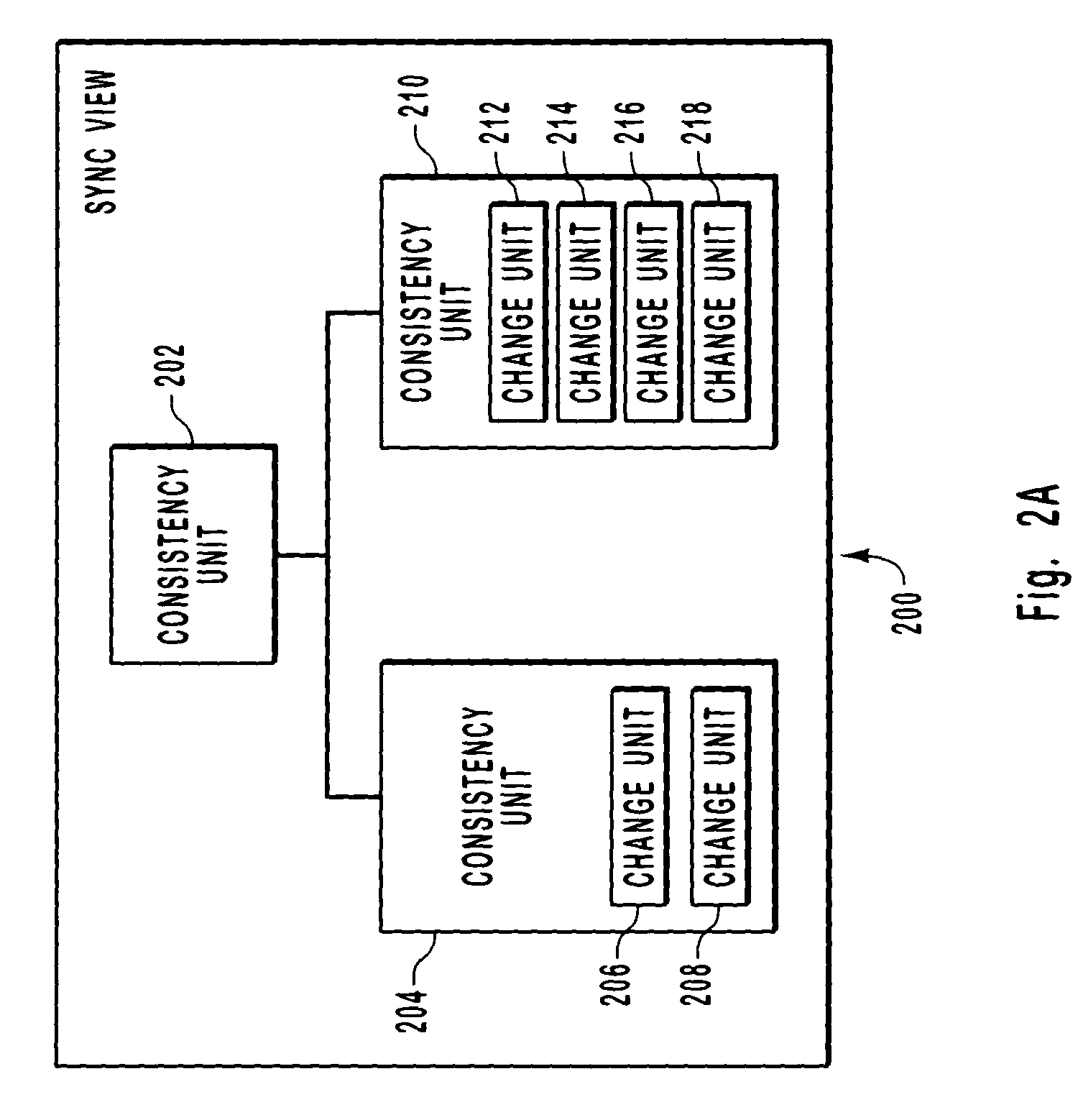Synchronizing logical views independent of physical storage representations
a logical view and physical storage technology, applied in the field of data synchronization, can solve the problems of system memory, inability to synchronize changes between replicas, and excessive metadata, etc., and achieve the effects of facilitating the compilation of logical schemas, reducing granularity, and reducing resource consumption
- Summary
- Abstract
- Description
- Claims
- Application Information
AI Technical Summary
Benefits of technology
Problems solved by technology
Method used
Image
Examples
Embodiment Construction
[0031]The present invention extends to systems, methods, and computer program product for synchronizing items at replicas through logical views. Replicas utilize catalogs to map items from a physical layout to a logical view. Catalogs can be compiled from logical schemas that facilitate the mapping of data from different physical layouts (e.g., at a plurality of different replicas) to substantially similar logical views (e.g., shared among the plurality of different replicas). Embodiments of the present invention may comprise a special purpose or general-purpose computer including various items of computer hardware, as discussed in greater detail below.
[0032]Referring now to FIG. 1, an example computer architecture including replicas that can be synchronized in accordance with principles of the present invention is shown. FIG. 1 shows a topology 100. The topology 100 includes a replica 102 and a replica 104, which may at computer systems connected to a common network (e.g., a LAN, W...
PUM
 Login to View More
Login to View More Abstract
Description
Claims
Application Information
 Login to View More
Login to View More - R&D
- Intellectual Property
- Life Sciences
- Materials
- Tech Scout
- Unparalleled Data Quality
- Higher Quality Content
- 60% Fewer Hallucinations
Browse by: Latest US Patents, China's latest patents, Technical Efficacy Thesaurus, Application Domain, Technology Topic, Popular Technical Reports.
© 2025 PatSnap. All rights reserved.Legal|Privacy policy|Modern Slavery Act Transparency Statement|Sitemap|About US| Contact US: help@patsnap.com



